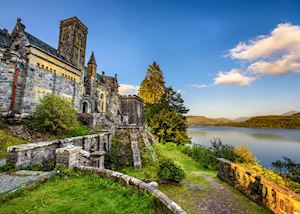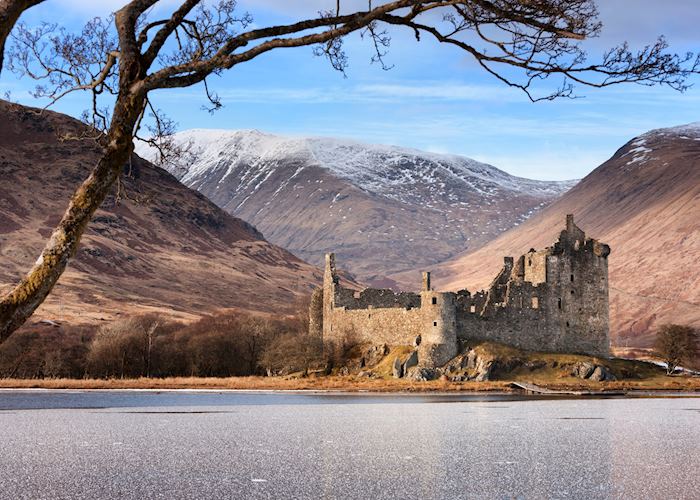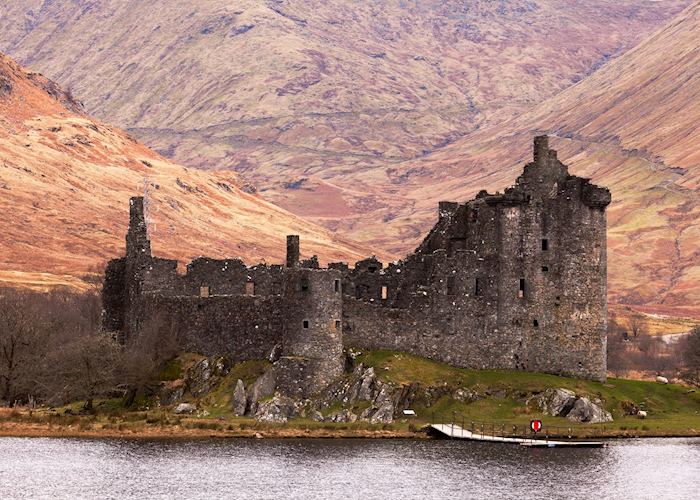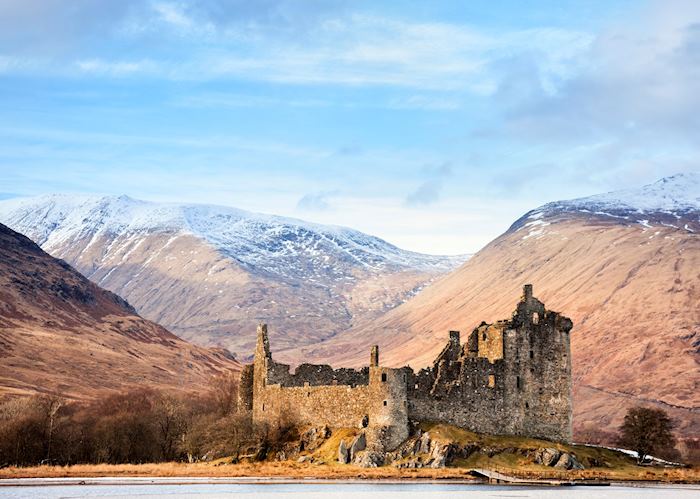You ideally first approach this behemoth body of water from Oban to the north. Then, the best views are to be had as you drive down the loch’s eastern bank.
To the south lies the Neolithic site of Kilmartin Glen, a cluster of standing stones, henges, stone circles, stone forts, petroglyphs and cairns scattered in a 10 km (6 mile) radius around the village of Kilmartin. The cairns are thought to have served as the burying places of Bronze Age kings.
 Kilchurn Castle is the scenic linchpin of the loch and the main point of interest on its shores. The castle originally occupied its own island, with the waters of Loch Awe serving as a natural moat and defensive barrier. Today, it’s strung out on its own peninsula after drainage during the Victorian period lowered the water levels of the loch, leaving the castle tethered to the mainland.
Kilchurn Castle is the scenic linchpin of the loch and the main point of interest on its shores. The castle originally occupied its own island, with the waters of Loch Awe serving as a natural moat and defensive barrier. Today, it’s strung out on its own peninsula after drainage during the Victorian period lowered the water levels of the loch, leaving the castle tethered to the mainland.
Dilapidated and skeletal, Kilchurn was constructed as a tower house, a type of castle popular with 15th-century Scottish nobles. It has seen an eventful history and taken on a range of guises. Its first incarnation was as a stronghold of the bellicose Clan Campbell, whose members went on to embellish it over time with features such as great halls and extra turrets.
It later morphed into a garrison during the 1715 and 1745 Jacobite Risings. Today, its melancholic, romantic air belies its warlike past.
As you journey along the loch’s banks, look for the two islands (sometimes lost in mist) in the middle of the lake. You might also catch passing glimpses of wildlife: red deer roam the conifer forests and gorse-covered hillsides around the loch. Other local residents include otters and ospreys.
From the loch’s banks you might look out upon Ben Lui, which is known locally for being the last peak to shed its winter coat of snow. Visit in the spring, and you may well see the hills surrounding the loch still blanched with white.
Brown trout and pike thrive in the loch’s waters, and we can arrange for you to go fishing with an experienced gillie if you choose to stay at Taychreggan, a hotel on the waterfront. You can bring back any catches to the hotel’s chef, who’ll cook them for your dinner.
Best time to visit Loch Awe
Loch Awe is at its best in the spring (March to May), or in the cool, traditionally quiet months of September and October. We advise against travel here during heavy winter snows, which can make driving conditions difficult, while in June, July and August you have to contend with the annoyance of Scottish midges (small biting flies).
who's been there
-
617-223-4521617-223-4752
- Make an inquiry
Places near Loch Awe
- Oban 13 miles away
- Isle of Jura 25 miles away
- Glencoe 28 miles away
- Loch Lomond 31 miles away
- Fort William 37 miles away
- The Highlands 42 miles away
- Glasgow 49 miles away
- Isle of Islay 53 miles away
- Loch Ness 77 miles away
- Edinburgh 82 miles away
- The Cairngorms 83 miles away
- Isle of Skye 86 miles away
- Inverness 91 miles away
- St Andrews 94 miles away
- Speyside 112 miles away
- The Outer Hebrides 125 miles away
- The Lake District 153 miles away
- Orkney 206 miles away
- Liverpool 219 miles away
- York 231 miles away
- Snowdonia National Park 241 miles away
- Wales 269 miles away










